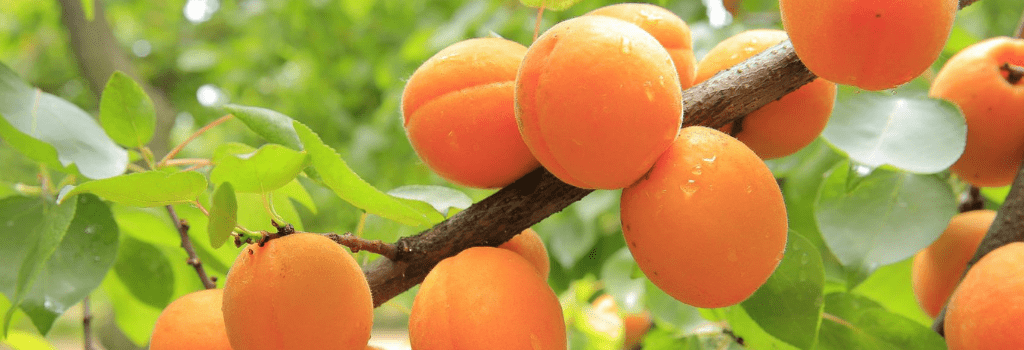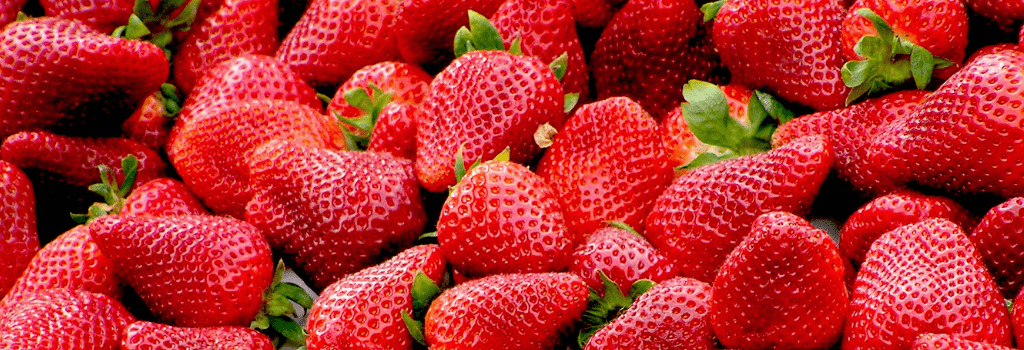
What do you find these days in the greengrocer’s shop? Do you think that all the fruits you see are in season? Do you know where they come from? We offer information about eight local fruits whose best moment is summer.
Do you know what products are grown in Girona? Or in Barcelona?
Did you know that, according to data from 2019, Lleida province is the first producer of peaches in the whole country? We give you information on fruits you can find close by and whose best time is summer:
1. APRICOTS
Let’s begin with apricots, one of the most characteristic summer fruits. With their sweet flavour, apricots are as tasty as nutritive. Ets el que menges [Catalan for You are what you eat] states apricots have high antioxidant and dermoprotective effects, can act as an anti-inflammatory and liver protector, and serve as a precaution in case of kidney stones.

Besides, considering 2019 production Catalonia is the fourth Autonomous Community in terms of apricot production.
> More information (in Catalan)
2. FIGS
What do you know about figs? Perhaps you didn’t know they are rich in fibre and good for combating constipation. Did you know that figs prevent the absorption of cholesterol? And the recommendation to eat figs in case of osteoporosis or anaemia? The reason is that figs are particularly rich in calcium and iron.

Catalonia is among the biggest producers of figs in Spain, although Extremadura is by far the largest. Most Catalan figs come from Lleida (more than 5,300 tons per year).
> More information (in Catalan)
3. STRAWBERRIES
Strawberries have very positive effects on our health: they contain substances beneficial for the heart, can help prevent ageing, boost the kidneys and prevent tooth decay, among other things.

Huelva produces more than 90% of the strawberries in Spain, but according to the Ministry of Agriculture’s 2015 Statistical Yearbook, the province of Barcelona comes just behind. As explained by Ets el que menges (in Catalan), strawberries improve blood circulation, help take care of the skin and joints and can block the modification of “bad” cholesterol.
> More information (in Catalan)
4. MELONS
Like watermelons (see below), melons stand out for being made up of a large amount of water (80% in the case of the former). They also contain many vitamins and minerals. Melon is produced all over Catalonia except in the Pyrenees area. There are several varieties of melons, but most of them are in season in summer. Even so, in Catalonia, you can find the so-called winter melon, which is in season during the coldest months (from November to January).

Here’s a curiosity: Did you know melons belong to the same family as courgettes and cucumbers?
> More information (in Catalan)
5. NECTARINES
Nectarines can be eaten raw and in preparations such as desserts, sponge cakes, jams, fruit salads and pies. Moreover, Catalonia (in particular Lleida province) is the uttermost nectarine producer in Spain, with more than 225,000 tons annually, according to a report from the Ministerio de Agricultura, Pesca y Alimentación (MAPA).
Some people say nectarines are a hybrid of peaches and plums, but this is just a myth. Nectarines are a variety of peaches, and you may be surprised to know that both nectarines and peaches can grow in the same tree. In any case, they are fruits rich in vitamin A, potassium, magnesium, selenium, and zinc. In addition, they are easy to digest, protect against ageing and cancer and are recommended for people with hypertension or cardiovascular problems.

> More information (in Catalan)
6. PEARS
Most Spanish pears come from Catalonia, specifically from Lleida, a province responsible for 40% of the pear production in Spain.
It is a fruit whose different varieties allow harvests in winter or summer. Those from the winter are better preserved than those from summer. You can use this fruit in many recipes in desserts, jams and compotes.

Pears have several health benefits, as they contain antioxidants with anti-ageing effects and may help reduce cholesterol and cardiovascular risk. As they contain a lot of potassium, they contribute to lowering blood pressure; they may also reduce allergic and asthmatic responses.
> More information (in Catalan)
7. PEACHES
This fruit grows in large numbers very close to us, for Catalonia is one of the biggest producers of peaches in Spain. Specifically, Lleida is the province that produces the most (more than 250,000 tonnes per year), according to data from 2019. They are also grown in Tarragona province and the Penedès region of Barcelona province.
As for nutritional properties and health benefits, fibre, minerals, and vitamins stand out.

8. WATERMELONS
One of the most emblematic summer fruits, watermelon stands out, above all, for its hydrating properties. It contains vitamins and antioxidants, and its composition is mostly water, like melon. Specifically, 93% of the fruit is water.

Watermelon provides several health benefits: it has a diuretic and depurative effect, and it can help prevent some types of cancer and also heart problems, among others.
Catalonia is not, in this case, one of the major producers at the national level. Yet, this does not mean that watermelon is not grown in Catalonia. For example, Tarragona province produced more than 6,400 tonnes in 2019.
> More information (in Catalan)
WHAT IS YOUR FAVOURITE SUMMER FRUIT?
In the heat of summer, what fruit do you like best? Did you know all the benefits of the eight fruits we have just described? Did you know that all these summer fruits (and others) are grown in Catalonia? From now on, you have no excuse for not eating seasonal and local fruit!
Share your ideas on the social networks following this Instagram post!
Below we share some seasonal calendars so that you can keep up to date with the seasonal fruits of each month:
> The calendar Soy de temporada [I’m in season, in Catalan].
> The calendar Opcions [Options, in Catalan] of fresh seasonal food.
Now you know: Consume local and proximity products and contribute to reducing the environmental footprint of your meals!
If you want to learn more about local and seasonal trade, come visit the Menja, Actua, Impacta! [Eat, Act, Impact] exhibition! We have a whole section dedicated to local and seasonal products and a lot of proposals to make your diet more sustainable and healthy.

